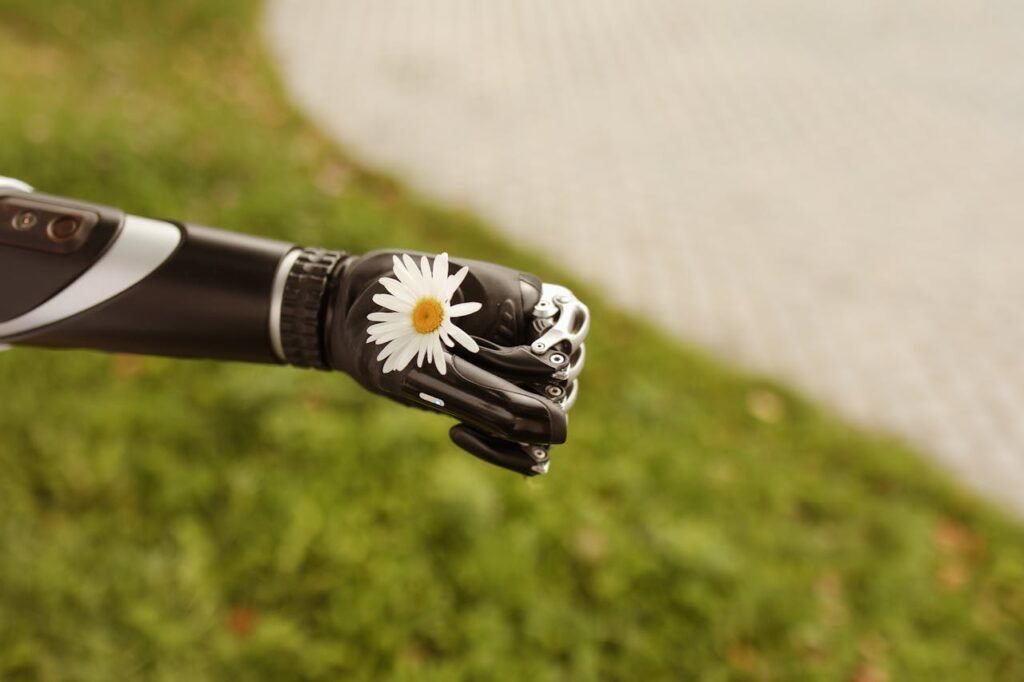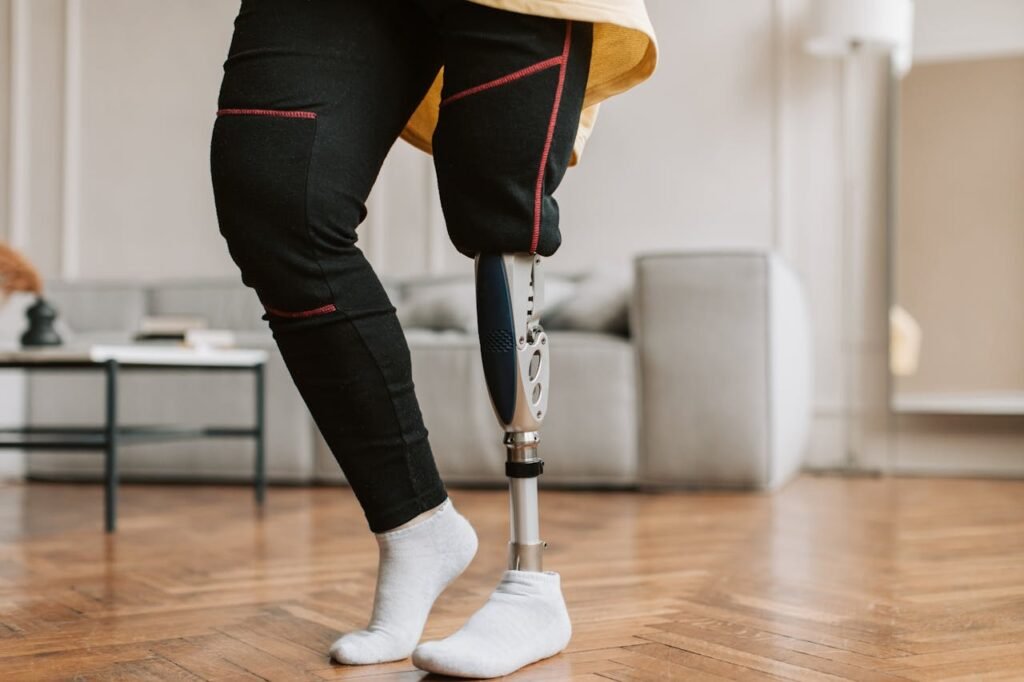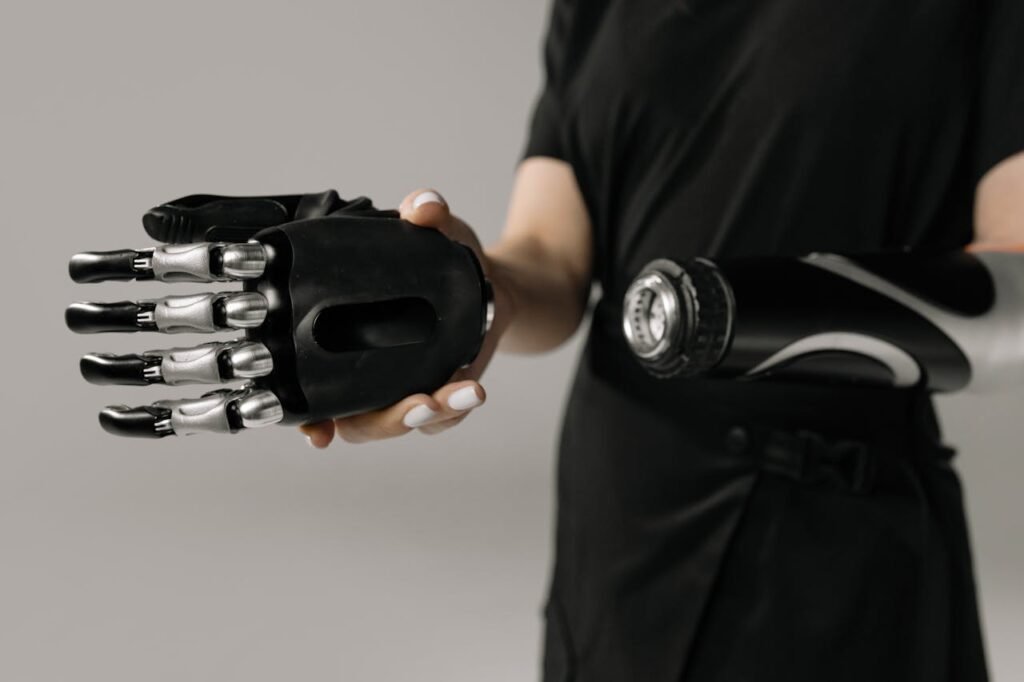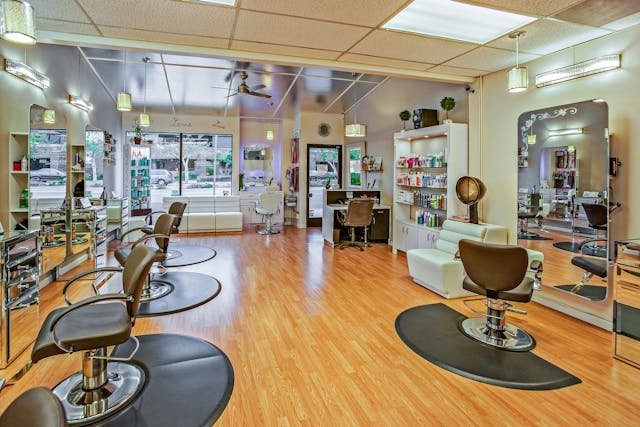Visiting a salon or spa is one of life’s simplest pleasures. It’s a moment to relax, refresh, and feel cared for. But for people using prosthetic limbs—especially upper-limb prosthetics—these experiences can sometimes feel uncertain. Questions arise quietly in the mind: Will the staff understand how to handle my prosthetic? Is the environment safe? Do I need to remove it?
The truth is, everyone deserves to enjoy self-care without hesitation. Whether it’s a haircut, a manicure, a massage, or a facial, you have every right to feel comfortable and confident during your visit. The key is knowing what to ask and how to prepare.
At RoboBionics, we’ve met hundreds of prosthetic users who’ve shared their stories—some full of ease, others with lessons learned. This article brings together all those insights, combining practical tips, gentle guidance, and the kind of questions that make beauty and wellness experiences smooth and enjoyable.
You’ll learn how to prepare before visiting a salon or spa, how to talk to staff without feeling awkward, and how to protect your prosthetic while still enjoying the full experience.
Let’s start by understanding how salons and spas can be made comfortable for everyone—prosthetic users included.
Preparing Before Your Appointment
Understanding Your Prosthetic’s Needs

Before visiting any salon or spa, it helps to know your prosthetic’s material, sensitivity, and care instructions. Some prosthetics, like the Grippy Bionic Hand, are built with advanced materials that can handle light moisture and surface contact. Others may need to stay completely dry.
Read your device’s manual or check with your prosthetist to know what kind of exposure it can safely handle. This helps you decide whether to remove it during a treatment or keep it on.
If your prosthetic includes sensors or myoelectric components, water and oil can interfere with their function. In such cases, removing it before certain treatments might be necessary. Planning ahead avoids stress later.
Choosing the Right Salon or Spa
Not every salon is equally equipped to serve customers with prosthetics, but many are open to learning. When booking your appointment, ask a few gentle questions. Does the staff have experience serving clients with prosthetics or disabilities? Are they comfortable making small adjustments?
You can often sense their attitude from how they respond. The best salons are those that listen carefully and are eager to accommodate. A professional team won’t make assumptions—they’ll ask questions respectfully and adapt as needed.
Choose a salon with wide spaces, stable furniture, and friendly staff who show patience. These qualities often matter more than luxury.
Packing Essentials for Your Visit
Carrying a small “prosthetic care kit” can make any appointment easier. Include a clean cloth, sanitizer, moisturizer, socket liners, and protective covers. If your prosthetic is battery-powered, bring the charger or a spare power bank.
These small items come in handy, especially if you plan to be out for a few hours. Having them gives you confidence that you can handle anything unexpected—like a splash of water or a bit of oil from a massage.
It’s also a good idea to wear comfortable clothing that allows easy access to your prosthetic. Loose sleeves and breathable fabrics keep you relaxed throughout your appointment.
Setting Expectations with Yourself
Before you even arrive, remind yourself that this is your time to unwind. Prosthetic or not, you deserve the same care and attention as anyone else.
If this is your first visit since wearing a prosthetic, you might feel self-conscious. That’s completely natural. Many people feel that way at first. Take a deep breath and remind yourself that self-care is part of confidence.
Being prepared mentally helps you enjoy the experience instead of worrying about reactions or adjustments. Every visit will get easier once you build familiarity and trust with your salon.
Communicating with Salon and Spa Staff
Starting the Conversation
When you arrive, take a moment to introduce yourself to your stylist or therapist. You don’t need to give a long explanation—just a few calm, simple words help. You can say, “I use a prosthetic arm, so I may need small adjustments during the session.”
This simple statement sets a respectful tone. Most professionals will appreciate your openness and will ask how to make you comfortable.
If they seem unsure, guide them politely. You can show them how to support your arm or suggest how you’d like your prosthetic handled. Communication helps avoid awkwardness and builds confidence on both sides.
Explaining What Works Best for You
Every prosthetic user has unique comfort levels. Some prefer to remove the device completely during spa sessions, while others keep it on for support. It’s perfectly fine either way.
Tell your therapist what feels best for you. For example, if you’re getting a head massage, you might want to rest your prosthetic arm comfortably on your lap. If you’re having a body massage, you can ask for extra padding or a towel under your limb for balance.
If you’re wearing a myoelectric hand like Grippy, explain that it uses muscle sensors. Ask them to avoid applying oils or lotions near the sensors to keep everything functioning well.
Handling Reactions with Grace
Sometimes, staff members might be curious or nervous. They might ask questions out of genuine interest. You can choose how much to share.
If you feel comfortable, explain briefly how your prosthetic works. It often helps ease their uncertainty. But if you prefer not to discuss it, a gentle smile and a short answer are enough. You don’t owe anyone an explanation beyond what’s needed for your comfort.
Remember, the more you visit salons or spas, the more natural it becomes. Over time, you’ll find places where the staff treats your prosthetic as just another part of you—and that’s how it should be.
Managing Touch and Sensitivity
During treatments, make sure to tell your stylist or therapist about any areas of sensitivity or pressure. Some prosthetic sockets fit tightly, and even gentle pulling or rubbing nearby can cause discomfort.
If you’ve removed your prosthetic, let them know which side needs extra care. For example, if they’re massaging your shoulders, they should use lighter strokes near the residual limb.
This kind of guidance helps them adjust their technique and ensures you stay comfortable throughout. Communication here isn’t about control—it’s about collaboration.
Salon and Spa Treatments: What to Expect
Haircuts and Hair Treatments

Haircuts are one of the easiest services to enjoy with a prosthetic. Most of the time, you can leave it on. Make sure your stylist adjusts your chair height so your prosthetic doesn’t bump into the armrests or sink edges.
If your prosthetic is myoelectric, avoid getting water near the electrodes or socket. You can ask your stylist to drape a towel carefully over your shoulder to prevent splashes.
For hair washes, let them know if you prefer to keep your prosthetic dry. Many stylists can position the sink to make this easier. If that’s not possible, you can remove your prosthetic and place it safely on a clean, dry surface.
When blow-drying or using heat tools, check that your prosthetic is positioned away from direct heat. High temperatures may affect sensitive materials or sensors.
Manicures and Nail Care
Manicures can feel tricky if you use an upper-limb prosthetic, but with a little creativity, they’re manageable. If your prosthetic is detachable, you can remove it and let the technician focus on your natural hand.
If you prefer to keep it on, inform the technician in advance so they can adjust their seating position. Using a small cushion under your prosthetic arm can provide support during filing or polishing.
Some prosthetic users enjoy decorating their prosthetic hand with nail art or polish on the silicone fingers. It’s a fun way to express personality and confidence. If your prosthetic has replaceable covers, you can even keep a “salon version” with colorful designs.
Always check with your prosthetist before applying any product to the prosthetic surface. Some chemicals may dull the finish or damage the material.
Facials and Skin Treatments
Facials are deeply relaxing, but it’s important to communicate boundaries. If your prosthetic hand rests on the massage table, cover it with a clean towel to protect it from oils, steam, or sprays.
Let your aesthetician know whether you want to remove the prosthetic during the session. If you do, place it somewhere stable—away from wet counters or heated devices.
For longer treatments that involve masks or steamers, ensure your arm is supported comfortably. A folded towel under your limb prevents strain and improves relaxation.
After the session, clean your skin gently around the socket area to remove any residue or moisture before reattaching your prosthetic.
Massages and Body Treatments
Massages require more planning, especially if your prosthetic covers a larger area of your arm. Before starting, tell your therapist how much contact you’re comfortable with.
Some people prefer to remove the prosthetic completely for full-body massages. Others keep it on to maintain balance or posture. Either way, make sure the prosthetic is placed safely on a flat, clean surface.
If you’re using a bionic hand, turn it off before the session. This prevents unintentional movements or muscle signal triggers.
Ask your therapist to avoid oils that could stain or harm your prosthetic materials. Neutral, water-based products are best. After the session, wipe the socket and surrounding skin with a clean, dry cloth.
Enjoying Pedicures and Foot Treatments
Making Pedicures Comfortable
Pedicures are often relaxing and social, but if you use a prosthetic hand or arm, you might wonder how to manage sitting, balance, or hand positioning during the service. The key is preparation and posture.
Choose a salon chair with firm back support and adjustable height. Keeping your spine straight and shoulders relaxed reduces strain on your prosthetic side. You can rest your prosthetic hand comfortably on your lap or a folded towel.
If the salon uses foot baths, check that the floor is dry to avoid slipping when you move. Tell your technician about your prosthetic so they can slow down or pause if you need to adjust your balance.
During the pedicure, it’s fine to take short breaks. Shifting position or stretching your arms helps circulation. Many prosthetic users find it easier to relax once they know they’re in control of the pace.
Managing Water and Moisture
Moisture is a big concern during pedicures. Water may splash from the basin, and if you’re wearing a myoelectric prosthetic like Grippy, keeping it dry is essential.
Cover your prosthetic arm with a waterproof sleeve or plastic wrap before starting. Most salons will help you with this if you ask politely. Keep a towel nearby to quickly dry any accidental splashes.
If you prefer, you can remove your prosthetic and store it in your care kit until the session ends. This allows you to relax without worrying about water contact. Just make sure to place it in a clean, dry corner away from foot creams or oils.
Aftercare and Clean-Up
Once your pedicure is done, wipe your residual limb gently with a soft towel before reattaching your prosthetic. Check for any moisture inside the socket. Clean and dry it thoroughly to prevent irritation.
You can also apply a mild moisturizer around the stump area if your skin feels tight after sitting for long. Avoid applying lotion inside the socket to maintain grip and stability.
If your prosthetic arm feels stiff or heavy after a long session, simple shoulder stretches can help ease tension. Small self-care habits make a big difference in long-term comfort.
Makeup and Beauty Services
Makeup Application with a Prosthetic

Makeup is both art and therapy—it boosts confidence and lets your personality shine. Many prosthetic users enjoy experimenting with makeup, and it’s completely doable with a few adjustments.
If you’re visiting a makeup artist, let them know beforehand that you use a prosthetic. This helps them plan how to assist during the session. For example, if applying eyeliner or mascara feels tricky, they can take over gently without rushing you.
You can also ask them to organize tools on your stronger side so you can reach everything easily. If you’re using your prosthetic hand to hold brushes, make sure the grip is secure but not tight.
Some prosthetic hands, like Grippy, have multiple grip modes—precision grips work wonderfully for thin brushes or lip liners. You can practice these at home before your appointment to feel more confident.
Applying Skincare and Hair Removal Treatments
If your salon visit includes skincare treatments like waxing or threading, talk to your beautician about which areas are sensitive or off-limits.
Avoid applying wax too close to the prosthetic socket area, as it can cause redness or irritation. The same goes for threading around the arms or shoulders. Ask your beautician to focus on accessible areas and leave a comfortable gap near your prosthetic.
After waxing or any exfoliating treatment, wipe the area clean and avoid strong fragrances for a few hours. Sensitive skin near the prosthetic can react more easily.
If you use any electronic prosthetic, keep it away from warm wax pots, steamers, or hair dryers. Heat can affect the sensors or wiring inside.
Hair Styling and Color Treatments
Hair styling sessions can last a long time, so comfort becomes essential. Choose a chair with adjustable height and good back support. Let your stylist know if you need to reposition occasionally.
If you’re getting a color treatment, cover your prosthetic arm fully with a towel or cape to prevent stains. Hair dye can sometimes react with the outer shell material, leaving marks.
Ask the stylist to handle the hair dryer or curling iron at a safe distance. High heat from styling tools should never come near the prosthetic surface.
At the end of your appointment, check your prosthetic for any residue or product marks. Wipe gently with a damp cloth and let it air dry before storing or reattaching.
Spa Etiquette and Communication
Being Clear Yet Polite
Good communication keeps every session smooth. You don’t need to over-explain your prosthetic—just share enough for the staff to understand how to help.
Before the treatment starts, outline simple boundaries: what areas they can touch, which movements to avoid, and when you might need a quick break. Most professionals appreciate direct and clear communication.
If something feels uncomfortable during the session, speak up immediately. It’s always better to adjust early than endure discomfort quietly. A good therapist will be happy to adapt.
You can also request a quieter room or private section if it helps you relax better. Self-care is about comfort as much as it is about beauty.
Encouraging Respectful Awareness
Sometimes, salon staff may ask personal questions about your prosthetic. Most mean well—they’re just curious. You can choose to answer or gently change the subject.
If you visit regularly, you can also take a few minutes to educate them about handling prosthetics safely. The next time, they’ll already know what to do. This builds trust and helps other clients with similar needs in the future.
When your prosthetic is visible, remember that confidence is contagious. The more at ease you appear, the more naturally others will treat you.
Tipping and Gratitude
Tipping your stylist or therapist is a gesture of appreciation, not obligation. If you received thoughtful service or extra care, a kind word or a small tip shows gratitude.
You can also thank the staff for their patience and understanding. This encourages them to continue serving clients with empathy and respect.
Simple kindness often leaves a stronger impression than any monetary reward.
Hygiene, Safety, and Skin Care
Protecting Your Prosthetic During Treatments

Salons are full of products—oils, lotions, serums, sprays, and cleansers. While most are harmless, some can damage prosthetic materials or interfere with grip sensors.
If your treatment involves any liquid, confirm the ingredients first. Avoid alcohol-based products or harsh chemicals near your prosthetic. Ask the staff to use milder alternatives when possible.
You can also carry your own protective sleeve or glove to cover your prosthetic during such treatments. Keeping it clean ensures longer durability and prevents product buildup.
Hygiene in Shared Spaces
Salon hygiene is important for everyone, but even more so if you wear a prosthetic. Shared tools and chairs can sometimes carry bacteria or moisture that may irritate your skin.
Choose salons that visibly maintain cleanliness—fresh towels, sanitized tools, and staff wearing gloves when necessary. Don’t hesitate to ask how they sanitize their equipment. A professional team will always have an answer.
After your session, wash your hands and clean around your prosthetic socket area gently. Use a mild cleanser and ensure your skin is completely dry before reattaching your prosthetic.
Skin Care for the Residual Limb
Spa treatments often expose your skin to heat, moisture, and oils. After removing your prosthetic, take a moment to inspect the residual limb. Look for redness, dryness, or irritation.
Apply a gentle moisturizer to keep the skin soft and hydrated. Avoid scented products or heavy creams that could affect the prosthetic’s fit.
If you notice persistent dryness or chafing, consult your prosthetist for advice. They can recommend hypoallergenic products safe for use around your socket.
Emotional Comfort and Confidence
Overcoming the First Visit Jitters
Walking into a salon or spa for the first time after getting a prosthetic can bring mixed emotions—excitement, hesitation, maybe even fear. You might wonder how people will react or whether the staff will know what to do. These feelings are completely normal.
The best way to ease them is to take things one step at a time. Start with a simple service, like a haircut or head massage. The goal is not to rush but to build comfort gradually.
When you see that people treat you with respect and professionalism, your confidence grows naturally. You’ll realize that your prosthetic is just another part of you—it doesn’t need to be hidden or explained beyond what’s necessary.
Each visit will feel easier than the last. The first few times are simply about getting used to being in that environment again and rediscovering your rhythm.
Finding Confidence in Your Own Skin
True beauty begins with self-acceptance. Whether you wear a prosthetic hand, arm, or finger, it’s a symbol of strength, not limitation. It shows resilience, adaptation, and the courage to move forward.
Remind yourself of this truth every time you look in the mirror. You’ve come through challenges most people can’t imagine. Your prosthetic doesn’t take away from your beauty—it adds to your story.
When you enter a salon or spa with this mindset, your presence changes the room. People respond to confidence. The more comfortable you are, the more relaxed everyone else becomes.
And that’s the essence of beauty—it’s not about symmetry or perfection. It’s about how you carry yourself, how you smile, and how you make others feel at ease.
Handling Curiosity with Grace
You may occasionally meet curious eyes or gentle questions. Some clients or staff might ask how your prosthetic works, how it feels, or if it’s heavy. You can decide how to respond.
If you’re in the mood, you can explain a little—sharing how it helps you live independently and comfortably. If you prefer privacy, a simple, “It’s something I use to make life easier” is enough.
You’re never obligated to explain more than you want to. Remember, curiosity often comes from admiration, not judgment. Many people have never seen a prosthetic up close and are genuinely inspired by your confidence.
Every conversation like this breaks a small barrier. With every interaction, you help others learn that prosthetics are simply a part of everyday life.
Building Long-Term Relationships with Salons and Spas
The Value of Familiar Faces

Once you find a salon or spa that treats you well, hold on to that relationship. Having familiar staff who understand your comfort level makes every visit smooth and stress-free.
They’ll remember your preferences—how you like your hair washed, whether you remove your prosthetic during massages, or which chair suits you best. You won’t have to explain each time, and that sense of familiarity creates trust.
Regular appointments also give you a space where you feel genuinely cared for. You start to look forward to your visits, not just for the service but for the kindness and warmth that come with it.
Educating Your Salon Team
If you visit often, you can slowly teach your salon staff how to care for prosthetic users in general. You can show them simple handling techniques or explain what to avoid.
For example, you can demonstrate how to drape towels without putting weight on your prosthetic, or how to position your arm during facials or massages. This guidance helps them improve their skills and serve others better.
Your presence alone creates awareness. Over time, the salon may even adopt inclusive practices for all clients—like offering protective covers, adaptive seating, or training sessions on prosthetic care.
Loyalty and Communication
Being loyal to a salon that treats you with respect is also a way of rewarding their effort. A kind review online or a personal recommendation can help them grow their business and inspire other salons to become more inclusive.
At the same time, if you ever face discomfort or misunderstanding, communicate openly. Most professionals appreciate honest feedback. It helps them correct mistakes and offer better service next time.
Mutual respect builds a foundation that lasts for years. Salons and spas that value their clients’ individuality naturally become places people trust.
Practical Takeaways for a Stress-Free Experience
Know Your Prosthetic’s Limits
The first step to a smooth experience is knowing your prosthetic well. Understand how it responds to water, oil, or heat. Know which settings are safe and which to avoid.
If you’re unsure, talk to your prosthetist before trying new treatments. They can recommend protective sleeves, cleaning techniques, or accessories that make salon visits easier.
It’s always better to prepare than to worry mid-treatment. Preparation builds peace of mind, and that’s the foundation of relaxation.
Communicate Clearly and Kindly
Open communication removes 90 percent of discomfort. When you express your needs calmly, people listen. Most stylists and therapists are eager to do their best—they just need to know how to help.
If something feels off, speak up immediately. Small adjustments, like changing your arm’s position or drying your prosthetic, can make all the difference.
Kindness in communication always leads to cooperation. The goal is not to demand—it’s to collaborate for comfort.
Carry a Small Prosthetic Care Kit
Keeping a few essentials handy can save the day: a clean towel, socket liner, charger, or protective cover. It’s a simple but effective way to stay ready for any situation.
This also helps you enjoy the experience without distraction. When you know you can manage any small issue, your mind relaxes fully into the moment.
Take Time to Rest Afterward
Even short salon sessions can be tiring if you’re holding a posture for long. After returning home, take a few minutes to stretch your shoulders and arms.
Remove your prosthetic, clean it gently, and let it air out. Then, take a deep breath and enjoy that post-salon calm—the quiet satisfaction that comes from caring for yourself.
Self-care doesn’t end when you leave the salon; it continues when you give your body and mind the rest they deserve.
The Bigger Picture: Inclusion in Beauty Spaces
Why Inclusion Matters
Beauty is about feeling good in your own skin, and that right belongs to everyone. Salons and spas that embrace inclusivity make a difference far beyond appearance—they help people feel accepted, respected, and seen.
When businesses make small adjustments to welcome prosthetic users, they send a powerful message: everyone deserves care. This mindset changes lives. It turns everyday spaces into safe, affirming environments.
The Role of Education and Empathy
Most salons are willing to accommodate—they just need awareness. Training staff to handle prosthetics gently, use inclusive language, and maintain hygiene around assistive devices can transform their approach.
Empathy is the key ingredient. When people understand that a prosthetic is part of someone’s body and identity, not an obstacle, true inclusion begins.
By visiting and educating salons, prosthetic users become quiet advocates for change. Every appointment becomes an opportunity to replace hesitation with understanding.
The Future of Accessible Beauty
The beauty industry is slowly evolving. Some salons now offer adaptive furniture, wider seating, or specialized tools for people with different needs. This is just the beginning.
At RoboBionics, we believe accessibility should be standard—not special. With advanced prosthetics like the Grippy Bionic Hand, people can style their hair, apply makeup, and perform grooming routines independently. Our technology is designed to restore touch, control, and confidence in daily life.
When salons and prosthetic technology work hand in hand, self-care becomes universal. Everyone gets to feel beautiful, capable, and whole.
A Closing Word: Beauty Beyond Barriers
Visiting a salon or spa should never feel like a challenge—it should feel like a celebration. A celebration of who you are, how far you’ve come, and how confidently you carry yourself.
Prosthetics don’t limit beauty; they redefine it. They show that strength and grace can exist together. Every brushstroke, every haircut, every gentle touch reminds you that you deserve care just like anyone else.
So the next time you book a salon appointment, walk in with your head high and your heart calm. You’ve already overcome bigger things than this. Enjoy the pampering. Let yourself relax. You’ve earned it.
At RoboBionics, we’re proud to support people in every part of life—from the classroom to the workplace to the salon chair. With innovative prosthetics like Grippy, you can live each day with independence, dignity, and joy.
If you’d like to explore how our technology can make everyday life smoother, schedule a free demo with our team at www.robobionics.in/bookdemo.
Because beauty isn’t just about appearance—it’s about confidence, comfort, and the quiet pride of knowing you’re living life fully, freely, and fearlessly.



